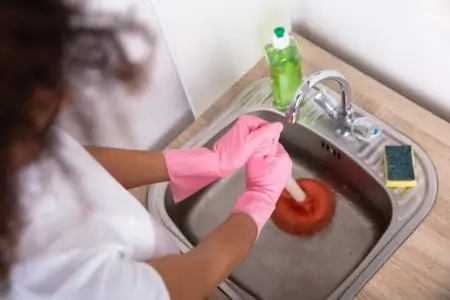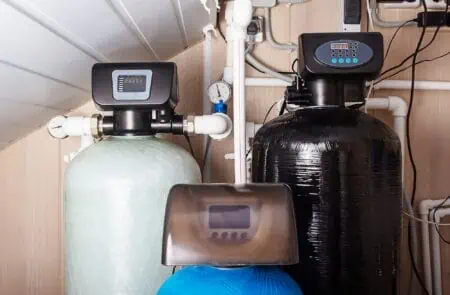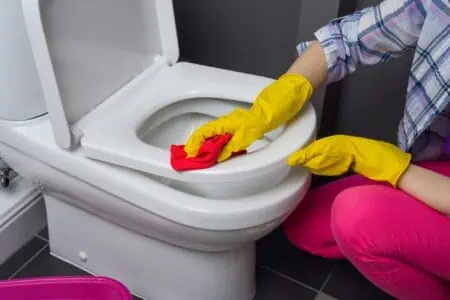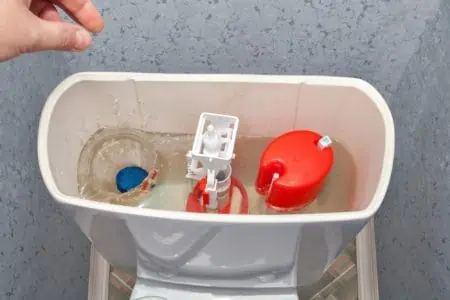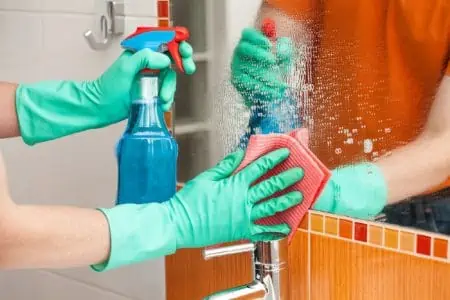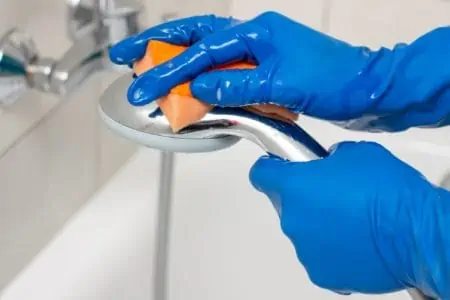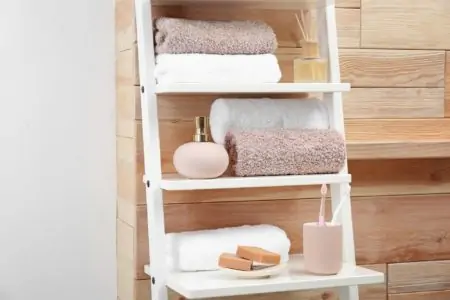A blocked drain is nearly impossible to live with. From water coming back up while you’re draining the sink or standing in dirty water while you’re showering, nobody wants a clogged drain.
We’ve put together nine ways to unclog a drain so that you can say goodbye to this problem once and for all. If one method doesn’t work for you, simply try another. It’s great to have options!
Key Takeaways
- Use a coat hanger or plumber’s snake to remove surface clogs.
- Try hot water, baking soda, and vinegar to dissolve and flush away blockages.
- Use a wet vacuum or plunger for stubborn clogs.
- Contact a plumber for severe blockages or if DIY methods don’t work.
How to Unclog a Drain
Here are nine methods to try.
Coat Hanger
For clogs that aren’t too deep down, a coat hanger can work wonders.
- Straighten out the coat hanger, making it as long as possible.
- Bend one end to create a small hook.
- Insert the coat hanger into the drain and start feeling around for a blockage.
- Work the coat hanger around the clog and use the small hook to pull it out.
- Once it’s out, run hot water to clear the drain.
This is best for clogs that are near the surface. You may want to check with a flashlight beforehand to see if you can spot the clog. If you’ve tried this method and the water still isn’t draining properly, there may be another clog further down, in which case you’d need to use a plumber snake.
Plumber’s Snake
Plumber’s snake, or drain snakes, are longer than straightened coat hangers and better at getting out deeper clogs. Here’s how to use it:
- Insert the snake into your drain.
- Twist it in one direction. The little grips on the snake will latch onto any clogs.
- Pull it out and dispose of the clog.
- Clean the snake and the drain.
This is a really awesome tool for clearing hair clogs out of drains. If your shower drain isn’t working all that well, and you often have standing or slow-draining water, a drain snake may be just the thing to fix the problem.
Hot Water
This is a very simple trip but it’s worth trying it first or in combination with any of our other tips. Hot water can soften and dissolve gunk and residue that is causing a clog. Plus, it’s really cheap so it’s worth giving it a go.
- Boil water, either in a kettle or on the stove.
- While the water is boiling, if there is standing water in the sink, remove as much of it as possible.
- Pour a few quarts of boiling water down the sink and wait a few minutes.
- If it doesn’t drain, that means it hasn’t worked to dissolve the clog. Remove the water and repeat the process a few times.
- If still no luck, you’ll need to try another method.
Baking Soda and Vinegar
If you’ve been into eco-friendly cleaning for a while, you’ll know this is a fantastic combination for cleaning. And clearing clogs! Who knew?
- Pour a pot of boiling water down the drain first to loosen any clogs and dissolve grease.
- Pour one cup of baking soda directly down the drain. Let this sit for up to 10 minutes.
- Pour one cup of distilled white vinegar down the drain. Don’t be alarmed if it fizzes; this is the reaction between baking soda and vinegar.
- Wait 10 minutes.
- Pour another pot of boiling water down the drain.
- Run the hot faucet for five minutes to flush everything away and ensure that the clog is gone.
Expert Advice
Do this every few days as a preventative measure. This is how we clean our stainless steel sinks a few times a week, and it works wonders.
Wet Vacuum
If you have a wet vacuum, why not put it to the test for unclogging your drain?
- Set your vacuum to liquids.
- Create a tight seal over the clogged drain.
- Turn on the vacuum to the highest setting so that it has enough force to pull up the clog.
- If you have pulled the clog up, dispose of it and run hot water into the tap to ensure it’s draining properly.
Plunge It
Stubborn clogs may require the force of a plunger.
- If you have a double sink, seal off the drain of the unclogged sink using a wet cloth or a drain stopper.
- Create a tight seal around the clogged drain with the plunger.
- Fill that side of the sink with enough water to cover the plunger bell.
- Plunge well a few times. You will hear the suction pull up the clog.
- Remove the plunger and clog.
- Drain the water area and rinse the drain with running warm water for a few minutes.
Clean P-Trap
It may be that the clog isn’t surface level. In fact, it could be stuck in the p-trap curve in the drainpipe under the sink.
- Place a bucket underneath the drain — this is for catching any water or debris for the next steps.
- Unscrew the p-trap from the drainpipe.
- Clear out any clogs. Rinse well.
- Replace the p-trap, ensuring the connection points are secure.
- Run warm water for a few minutes.
Commercial Drain Cleaner
You may need to buy a commercial drain cleaner if nothing else is working. This can give a good deep clean of your drain and hopefully eradicate any stubborn clogs. Some popular choices are Green Gobbler and Drano. Before following our steps, make sure to read the manufacturer’s instructions. In general, these tips should be suitable for most brands:
- Pour the product directly down the drain.
- Wait for the recommended time on the packaging. This could be a few minutes or it could be overnight.
- Flush the drain with hot water.
Contact a Plumber
When in doubt, and after attempting a few of our tips, you may need to contact a plumber. These methods won’t work on all types of clogs, so if yours is severe, it’s best to get a professional to check it out.
Tips for Preventing Clogged Drains
Dealing with a clogged drain is annoying. Preventative measures are easy to follow and will save you a lot of stress. Here are some great tips:
- Use drain covers in showers: When you’re washing your long hair, the drain cover will catch the hair so you can dispose of it after each shower, rather than letting it slide into the drains and eventually cause clogs.
- Use the baking soda and vinegar tip every few days: This is a great way to clean your drains daily — it’s what we do in our house. It can tackle clogs in the making, so they don’t build up and cause issues.
- Don’t pour grease down the drain: It can harden and stick to the pipe walls. Instead, pour it into a separate container and put it in the trash.
- Don’t put food down the drain. Only put food into the garbage disposal — and only those which your manufacturer suggests. Instead, you can use a compost bin to collect food waste.
- Pour boiling water down your sink every week: This helps to budge small clogs before they become large and obtrusive clogs.
